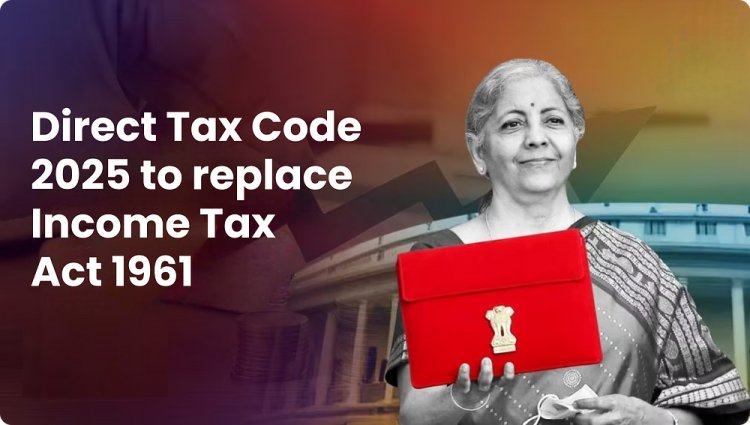DTC 2025: Transforming India’s Taxation with Direct Tax Code
DTC 2025 simplifies taxation, enhances compliance, and modernizes administration. Learn how the Direct Tax Code revolutionizes India’s tax system.
Share this Post to earn Money ( Upto ₹100 per 1000 Views )

The DTC 2025 (Direct Tax Code) is set to revolutionize India’s taxation system by replacing the outdated Income Tax Act of 1961. Effective from April 2025, this reform aims to simplify tax regulations, enhance compliance, and modernize tax administration for the financial year 2025-26. By reducing complexities, DTC 2025 ensures that tax compliance becomes more transparent for individuals and businesses.
Why DTC 2025 is Necessary
The Direct Tax Code was introduced to overcome the limitations of the Income Tax Act, which had become cumbersome due to frequent amendments and complex exemptions. After years of discussions, Finance Minister Nirmala Sitharaman introduced DTC 2025, marking a significant milestone in India’s tax reforms.
Currently, only 1% of India’s population pays income tax. With DTC 2025, the government aims to increase this figure to 7.5% by simplifying compliance and reducing unnecessary exemptions. Moreover, the Direct Tax Code will modernize taxation and establish a fairer system for individuals and businesses.
Key Features of DTC 2025
The DTC 2025 brings major changes to taxation, making compliance easier:
Simplified Residential Status
DTC 2025 eliminates the Resident but Not Ordinarily Resident (RNOR) category, classifying individuals solely as residents or non-residents. This change reduces confusion and streamlines tax obligations.
Unified Financial Year Concept
The Direct Tax Code removes the outdated concepts of Assessment Year (AY) and Previous Year (PY), allowing taxpayers to focus only on the Financial Year (FY). This simplifies tax filing procedures.
Restructured Capital Gains Taxation
Capital gains will now be treated as regular income under DTC 2025, making them subject to standard tax rates. This aligns with the government’s goal of simplifying tax structures.
Updated Income Categories
The Direct Tax Code retains five income heads but updates their names. For instance, “Income from Salary” is now “Employment Income,” while “Income from Other Sources” is renamed “Income from Residuary Sources.”
Standardized Corporate Tax Rates
DTC 2025 introduces a unified tax rate for both domestic and foreign companies, ensuring easier compliance for multinational corporations.
Fewer Deductions and Exemptions
By minimizing deductions and exemptions, DTC 2025 simplifies tax filing and reduces loopholes that could lead to tax evasion.
Expanded Tax Audit Roles
Under DTC 2025, Company Secretaries (CS) and Cost and Management Accountants (CMA) can conduct tax audits, a responsibility previously limited to Chartered Accountants (CAs).
Strengthened TDS and TCS Rules
With DTC 2025, Tax Deducted at Source (TDS) and Tax Collected at Source (TCS) will apply to almost all types of income, ensuring consistent tax collection throughout the year.
Enhanced Structure and Organization
The Diect Tarx Code restructures tax laws, increasing the number of sections from 298 to 319 and schedules from 14 to 22, making it more intuitive.
Tax Exemption for Political Parties
Despite its objective of broadening the tax base, DTC 2025 controversially continues to exempt political parties from taxation, raising concerns about fairness and transparency.
How DTC 2025 Benefits Taxpayers and Professionals
The DTC 2025 simplifies compliance, making it easier for individuals to file taxes. By reorganizing tax categories, the Direct Tax Code ensures taxpayers clearly understand their obligations. Businesses, particularly multinational corporations, will benefit from standardized corporate tax rates and reduced regulatory burdens.
For professionals preparing for CA, CS, and CMA exams, understanding DTC 2025 is crucial, as it reshapes taxation concepts and compliance procedures.
Conclusion
The DTC 2025 marks a groundbreaking shift in India’s taxation system. By simplifying regulations, broadening the taxpayer base, and reducing litigation, the Direct Tax Code creates a more transparent and efficient framework. Whether you are a taxpayer, business owner, or tax professional, adapting to DTC 2025 is essential as India transitions to this modernized tax structure.
















